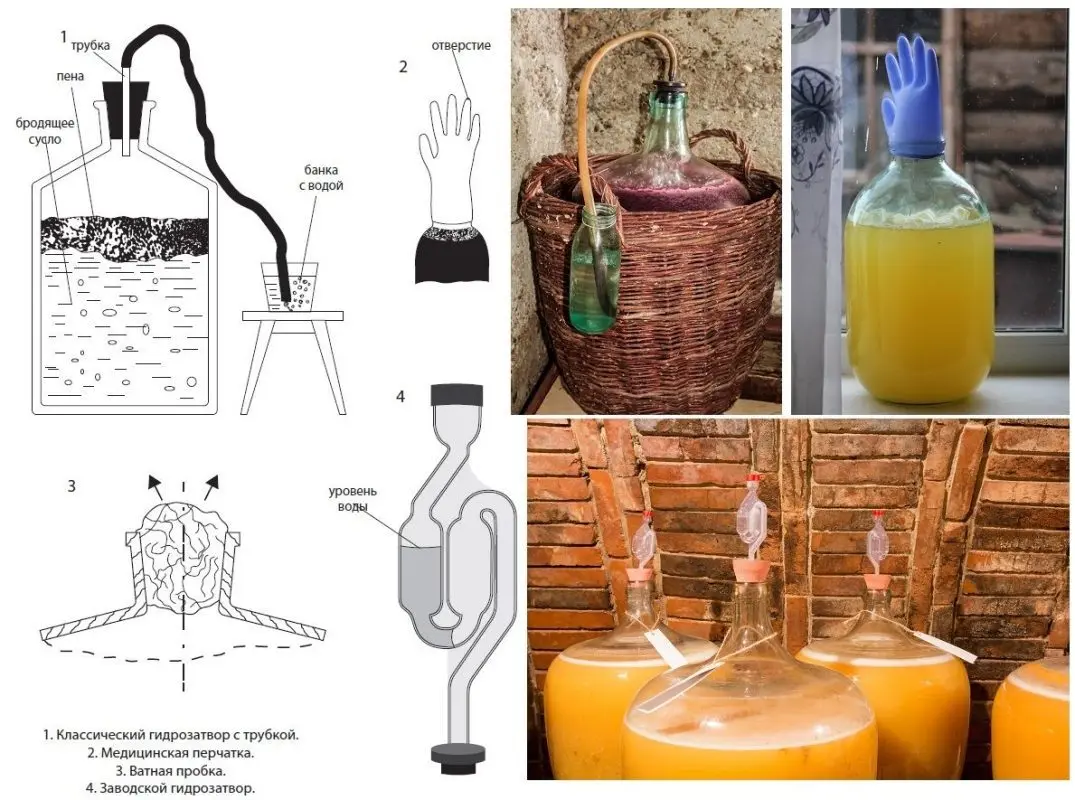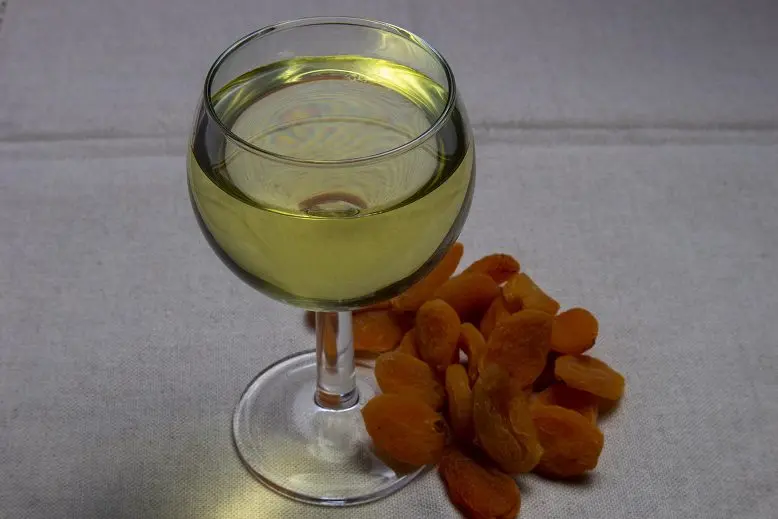Home-made wine made from dried apricots (apricots, kais, and other dried apricots) is remembered for its straw color, subtle aroma of raw materials and mild apricot flavor. The technology for preparing the drink has several features.
It is very important to choose the right raw material: it should have a pleasant, not musty smell, be free of rot, mold and other signs of deterioration, such as blackened parts. The fruits must be carefully sorted out, since even one bad dried apricots can ruin the entire batch of the drink.
To prevent mold infection, all containers and tools used should be sterilized with boiling water, then wiped dry with a clean, dry cloth. You can work with the wort only with well-washed hands.
Ingredients:
- dried apricots (apricots, other dried apricots) – 2 kg;
- water – 6 liters;
- sugar – 400 gram;
- citric acid – 30 grams (or juice of 6 medium lemons);
- wine yeast (or sourdough) – per 10 liters of must.
Dried apricot weights are pitted. Dried apricots contain 48-53% natural sugar. To obtain dry wine, you can limit yourself to adding 200 grams of beet sugar at the 3rd stage of preparation. Citric acid or lemon juice must be added, otherwise fermentation will be weak, and the finished wine will not be stored well.
To activate the fermentation, wine yeast is required (universal fruit, or for white grape varieties) or home-made sourdough from raisins (prepared 3-5 days before working with the must). Baker’s and alcohol yeast cannot be used, otherwise you will get mash instead of wine. Since dried apricot wort is slowly fermenting, the recipe indicates the amount of yeast per 10 liters, although in fact it will turn out 7-8 liters of wort.
Recipe wine from dried apricots
1. If apricots are used, pit dried apricots.
2. Pour dried apricots with warm, but not hot water (the optimum temperature is 30-35 ° C). Leave for 10 minutes, then remove the floating debris, drain the water and rinse the pulp thoroughly under running water.
An easier and more effective way to soften dried apricots and destroy harmful microorganisms is to pour boiling water over raw materials, cover and leave for 60 minutes. But in this case, the taste and aroma deteriorate – notes of compote will appear in the wine.
3. Skip dried apricots through a meat grinder. Place the resulting pulp in a non-metallic container with a wide neck – an enameled (plastic) bucket or basin. Add water (6 liters according to the proportions in the recipe), a third of sugar (150 grams), citric acid (lemon juice). Mix.
4. Dilute the yeast according to the instructions on the sachet. Incorporate yeast (or starter) into the wort. Move the container to a dark room with a temperature of 18-25°C. Tie the top with gauze to keep insects out. Leave for 4 days. Twice a day stir the wort with a wooden stick or hand, drowning the pulp in the juice – the pulp that has floated to the surface. Without regular stirring, the wort can turn sour.
12-24 hours after the introduction of yeast (sourdough), signs of fermentation should appear: foam, hissing and a slight sour smell. This means that the process is running normally.
5. After 4 days from the moment of introducing the yeast, strain the wort through 2-3 layers of gauze. Squeeze the pulp dry (no longer needed).
6. Add a second portion of sugar (150 grams) to the filtered juice, mix and pour into a fermentation tank (fill up to a maximum of 75-80% of the volume so that there is room for another portion of sugar, foam and carbon dioxide).
7. Install a water seal on the neck (you can use a medical glove with a hole pierced by a needle in one of the fingers). Transfer the fermentation container to a dark place (or cover) with a stable temperature of 20-28 °C.

8. After 5 days, add the remaining sugar (100 grams). To do this, drain separately 200 ml of juice, dilute sugar in it, then pour the resulting syrup back into the fermentation tank.
Depending on the yeast and temperature, the fermentation of dried apricot wine lasts 40-60 days. The end of the process is indicated by the absence of gas release from the water seal (the glove will deflate), the clarification of the wort and a significant amount of sediment at the bottom – it can reach up to a third of the capacity.
If the fermentation has not stopped after 50 days from the moment of pouring into the fermentation tank (6th stage), in order to avoid the appearance of bitterness, drain the wine from the sediment through a tube into another container and put it under a water seal to ferment at the same temperature.
9. After the end of fermentation, drain the young dried apricot wine through a straw, without touching the sediment. Try a drink. Sweeten with sugar to taste, if desired. You can also fix it with alcohol (vodka) – 5-15% of the volume of wine. Fortified wine keeps better, but is tougher in taste.
10. Pour the wine into aging containers (optimally – a glass bottle or jars), trying to fill to the top so that there is no contact with oxygen. Close hermetically. If sugar was added for sweetening, it is advisable to keep the first 10-12 days under a water seal in case of repeated fermentation.
11. Transfer the wine for aging to a refrigerator or cellar with a temperature of +5-16 °C. Leave at least 4-5 months (better 6-9). As sediment appears with a layer of 2-5 cm (at first every 10-15 days, then less often), filter the drink by pouring it through a straw.
A feature of dried apricot wine is poor clarification. Bentonite and other substances help weakly. You need to keep the drink in the cold and wait at least a couple of months.
12. Ready wine can be poured into bottles and hermetically sealed.
The recommended shelf life of homemade dried apricot wine is 3-4 years. Fortress – 10-13%.










